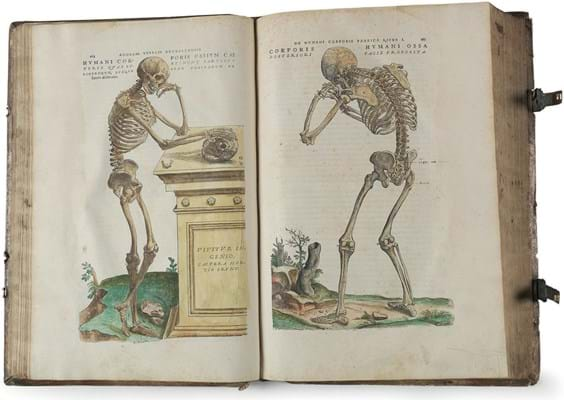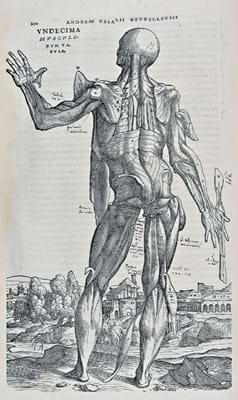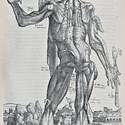On June 28, Vienna auction house Dorotheum (25% buyer’s premium) made its own little bit of history in selling a 1543* first for €280,000 (£245,615) – the most expensive book this saleroom has ever sold.
Drawing on the then radical practice of dissecting human rather than animal bodies and dealing with bones and muscles, blood vessels, nerves, abdominal viscera, thoracic organs and the brain, the Vesalius work combined new scientific method and observation with art and fine typography to produce one of the most beautiful medical books of any age.
It is an even more astonishing achievement when one recalls that Vesalius, who had studied at Louvain and Paris, had been appointed a professor of anatomy at Padua (while teaching simultaneously at Bologna and Pisa) at the age of just 24, and had still to reach his 30th birthday when his great work appeared.
Vesalius, who later served as a personal physician to both the Emperor Charles V and King Philip II of Spain, was the first physician to conduct his own dissections on human cadavers while delivering his lectures, rather than leave it to a barber-surgeon.
To supply him with sufficient specimens for demonstrations, the Paduan criminal court even made available to him the bodies of executed criminals.
Reproducing drawings by an unknown artist or artists, more than 200 woodblocks were cut by Francesco Marcolini da Forli in Venice. These were then shipped to Basel, where the printer Joannes Oporinus followed Vesalius’ precise instructions as to where they were to be placed and how they were to be keyed to marginal explanations.
The blocks for these hugely influential plates survived for four centuries before being lost during a Second World War bombing raid on Munich.
Vienna copy
In a period binding of blind-stamped leather over wooden boards, the Vienna copy was partially coloured in a contemporary hand – to the extent of some 23 full-page and around 200 smaller woodcuts on the first 165 of the full count of 663 pages.
It also includes some notes by previous owners, among them the German physician Caspar Naevius, who recalls the frightful, horrific and unprecedented pestilence in Venice in the year 1576 and gives a list of his patients, among them princes, counts and barons.
In 2001, the very fine but uncoloured copy in the medical library of Dr Meyer Friedman made a much higher than predicted $500,000 (then £345,000), but the Vesalian record holder by some distance is the dedication copy to the Holy Roman Emperor, Charles V.
In a contemporary binding of purple silk velvet, it has all illustrations fully coloured and heightened with liquid gold and silver. At Sotheby’s New York in 1998, as part of the great Haskell F Norman library, it sold for $1.5m (then £900,000).
* 1543 was a good year for landmarks, that year having also brought the publication of Copernicus’ De revolutionibus.


















